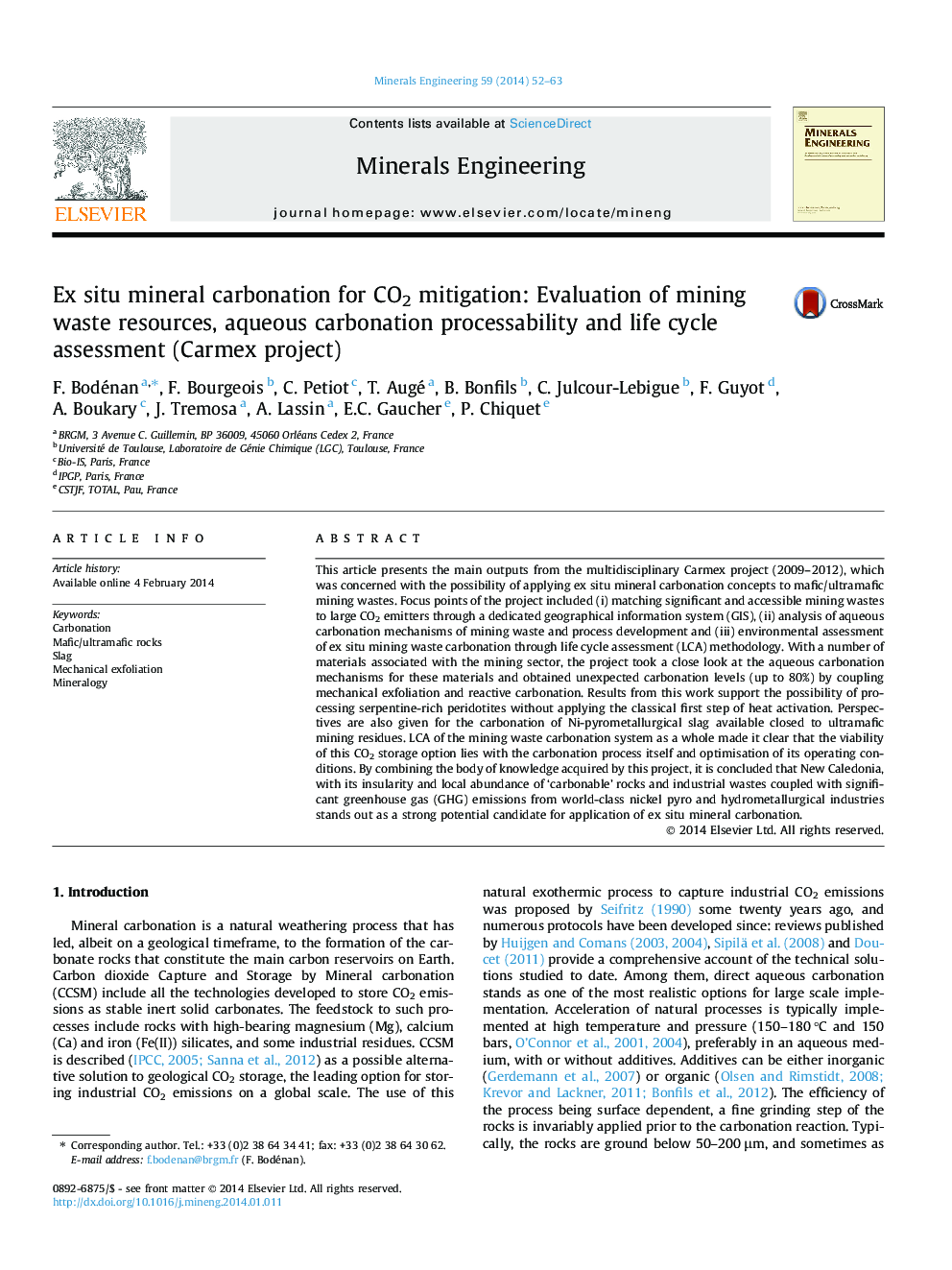| Article ID | Journal | Published Year | Pages | File Type |
|---|---|---|---|---|
| 233329 | Minerals Engineering | 2014 | 12 Pages |
•Worldwide availability of mining wastes for ex situ mineral carbonation.•Direct aqueous mineral carbonation with mechanical exfoliation.•High carbonation yield for serpentinised materials without heat activation.•Life cycle analysis for comparison of aqueous mineral carbonation processing routes.
This article presents the main outputs from the multidisciplinary Carmex project (2009–2012), which was concerned with the possibility of applying ex situ mineral carbonation concepts to mafic/ultramafic mining wastes. Focus points of the project included (i) matching significant and accessible mining wastes to large CO2 emitters through a dedicated geographical information system (GIS), (ii) analysis of aqueous carbonation mechanisms of mining waste and process development and (iii) environmental assessment of ex situ mining waste carbonation through life cycle assessment (LCA) methodology. With a number of materials associated with the mining sector, the project took a close look at the aqueous carbonation mechanisms for these materials and obtained unexpected carbonation levels (up to 80%) by coupling mechanical exfoliation and reactive carbonation. Results from this work support the possibility of processing serpentine-rich peridotites without applying the classical first step of heat activation. Perspectives are also given for the carbonation of Ni-pyrometallurgical slag available closed to ultramafic mining residues. LCA of the mining waste carbonation system as a whole made it clear that the viability of this CO2 storage option lies with the carbonation process itself and optimisation of its operating conditions. By combining the body of knowledge acquired by this project, it is concluded that New Caledonia, with its insularity and local abundance of ‘carbonable’ rocks and industrial wastes coupled with significant greenhouse gas (GHG) emissions from world-class nickel pyro and hydrometallurgical industries stands out as a strong potential candidate for application of ex situ mineral carbonation.
